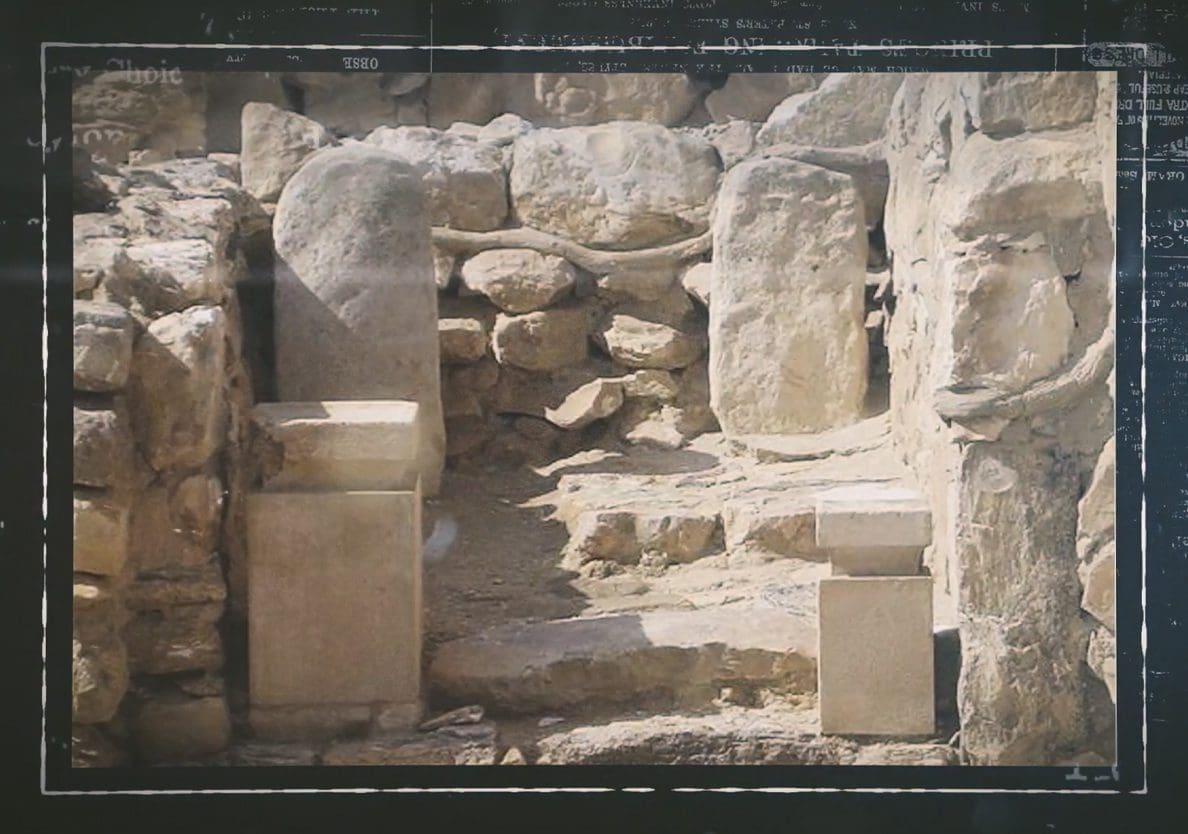Located on the very edge of the Judean desert, approximately 80 kilometers south of Jerusalem, lie the ruins of an ancient Biblical city known today as Tel Arad. So named because it is situated on a mound (or “Tel” in Arabic) and is located only 10 kilometers west of the modern Israeli city of Arad.
Among these ruins, at the peak of the site is a fortress. And in that fortress is a temple. And in that temple there is a room with pillars and a stone that some believe to be the Holy of Holies. Interestingly, this is the only temple discovered so far within the boundaries of the kingdom of Judah and was even built on an east-west access just like the Temple in Jerusalem. When this site was originally excavated in the ‘60s and ‘70s, archaeologists dated it to around the 10th century BC (c. 950 BC), the time of King David and Solomon. Though, it has been destroyed, buried, and rebuilt many times throughout history, beginning with the Judeans, and then Persians, and then Greeks, and then Romans, until it was finally abandoned in the 10th century AD. The archaeologists also noticed that at the top of the two pillars of the shrine, there was an organic residue. But due to the limited technology of the time, scientific analysis of these substances was inconclusive.
“The big pillar contained remnants of frankincense…. But the smaller pillar had a very well-preserved residue of cannabis, and it was mixed with animal dung…”
However, more recent teams of archaeologists have made some truly game-changing discoveries. For example, while it is still believed that the site itself dates back to the 10th century BC, archaeologists now think that the temple was built later. Probably around the 8th century (c. 750 BC). Also, after half a century, archaeologists were finally able to identify the mysterious residue upon the two pillars by using a newly developed technique, and in 2020 they published their findings. The big pillar contained remnants of frankincense, which the Israelites were instructed to burn in the Tabernacle and the later Temple in Jerusalem. But the smaller pillar had a very well-preserved residue of cannabis, and it was mixed with animal dung, which acted as a fuel so that when it burned the cannabis plant could reach the needed temperature to produce a mind-altering experience. Curiously, archaeologists also found evidence that the temple was purposely buried over only a few years later. As a 2002 archaeological report says, “There are no signs of destruction by fire in the temple but, rather, clear evidence of intentional cancellation.”[1]


What’s so exiting about these newfound discoveries is that they correlate extremely well with Biblical history. While it’s true that there were a few Judean kings who lived during the 8th century, one who really stands out is Ahaz, the father of Hezekiah. 2 Chronicles 28 says that Ahaz didn’t do what was right in God’s sight and that in every Judean city he made high places to burn incense to other gods. The Hebrew word translated as “burn incense” is qāṭar which carries the meaning “to make smoke.”[2] This is quite notable in light of the cannabis and frankincense discovered in the temple at Tel Arad. It also shows the extent of the Judeans defiance against the Lord. Not only did they violate God’s command by having a temple outside of Jerusalem, but they dared to burn impure fire, also. If this, indeed, was the work of Ahaz, then its “intentional cancellation” a few years later may be direct evidence of Hezekiah’s Godly reforms documented in the books of Kings and Chronicles (specifically, 2 Kings 18:1-6 and 2 Chronicles 31).
For much more on these discoveries and their implications, I highly recommend watching the very entertaining and informative video upon which this article was based: Shocking Discovery at Ancient Temple in Israel by Sergio & Rhoda in Israel.

Ryan Hembree is a daily co-host, speaker, and writer of Bible Discovery. He also hosts a YouTube channel that shows the unity of the Bible and how science and Scripture fit together. Ryan also has an honorary Masters of Ministry in Creation Science from Phoenix University of Theology.






